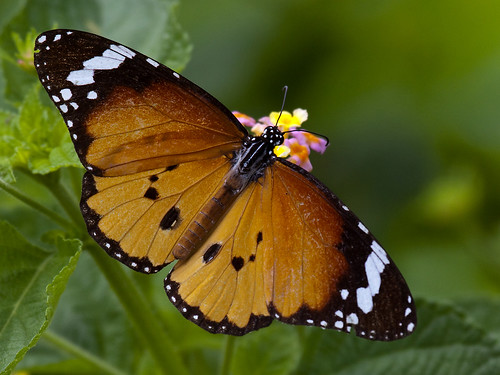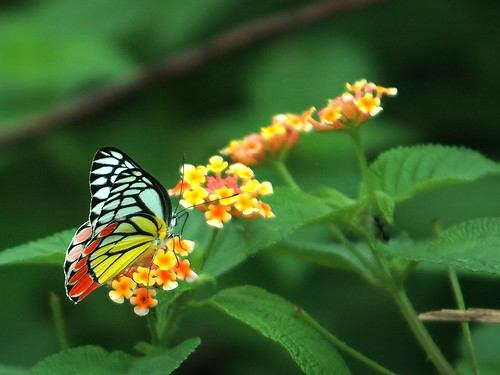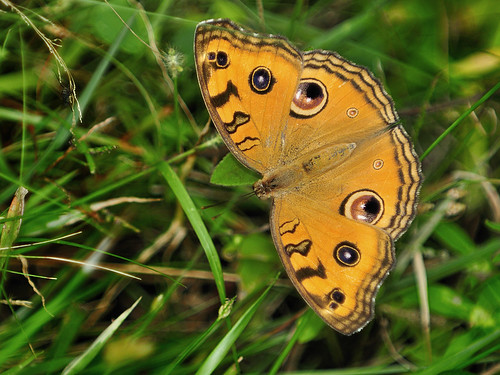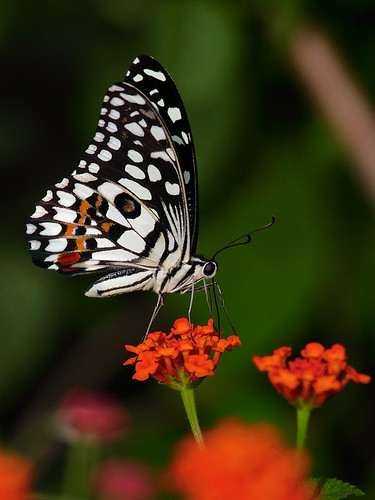![Dark Blue Tiger (Tirumala septentrionis) Dark Blue Tiger [Explored]](https://farm3.static.flickr.com/2762/4461296349_7465b67828.jpg)
1. Use the time when butterflies are less active
Butterflies are less active when it is cold, they need the heat of sun to start pumping their wings efficiently. An ideal time is to catch them when the sun is just about warming them and they are just about starting out. Any time earlier it would be probably the light would be too less and butterflies sitting quietly are difficult to spot. Once they are fully active they are too fast to allow for photography. You can also try late afternoon but I prefer mornings more than the afternoon. The angle of light on the wings is also better.
2. Know the likely locations
Unless you are lucky enough to be photographing in a butterfly park, knowing where to find greater concentrations of butterflies is a good idea. Learn about which flowers the butterfly prefer. For me the Lantana flowers have always worked wonders. In the hot afternoons butterflies aggregate at mud-puddling spots. Though the low angle can make it difficult to get a good composition it is always worth a try. At puddling spots you can also try to lure butterflies by using a piece of over ripe banana or other fruits, but over ripe fruits may not make for a pleasant photograph 😉
3. Use the longest and fastest lens possible
Macro lens? yes they are great but then they also mean you need to be very close to the butterflies which is not always possible and limits ‘turn and take a snap shot’ possibilities. I use my 100-400mm zoom more often to take butterfly pictures than my 105mm macro. A large aperture helps in creating great background.
4. Some poses are better than others
The beauty of the butterfly is in its wings unless they are in good view your photographs are likely to not look too great. For the larger butterflies a side pose with some angling of the wings to give it depth looks nice. For smaller butterflies a full on side pose with wings completely closed works better. If the wings are presented open then get your sensor to be as much parallel to them as you can. This will keep the complete wing in sharp focus. In a flat wing pose see that you place the butterfly diagonally to make it a bit more dynamic.
5. Rules of composition apply
As with any subject all composition guidelines apply – specially the rule of thirds. Unless the butterfly is filling the complete frame do not center it. Leave room for it to fly away! Implying that there should be enough negative space in the direction the butterfly is facing. Pay attention to the background, keep it clutter free, mostly a smooth bokeh or out of focus. Many a times it can be achieved by just shifting your position a little bit.
6. Learn about the circle of discomfort
Don’t let your shadow fall on the butterfly their compound eyes will most likely perceive the light change as a predator and will fly away. Butterflies will allow you up to a certain distance before they fly away, this varies from species to species, time of the day and also on the density of population. With experience you can learn what is the optimal distance keep at that and you will be rewarded.
7. Choose specimens carefully
Did I mention the beauty of the butterfly is in its wings? Unfortunately the wings are also very delicate, the scales which make up the color start shedding almost as soon as a butterfly starts to fly and over a period of time the wings become tattered and look worn out. Select specimens which look fresh and have wing edges intact.
8. Shoot RAW
Always shoot RAW the small penalty of larger size is offset many times by the greater amount of image information contained in a RAW file. Also you have greater post processing freedom with a RAW image as compared to a JPEG
9. Post processing matters
The RAW file can be considered as digital negative so you have to process it to look the best. Butterfly pictures benefit by increased saturation to bring out the colors I usually boost the saturation by about 15%. Masking the background and making to be a bit darker will give you that pop-out effect. You will also need to apply sharpening but be very careful I have seen too many good pictures being ruined by over sharpening, if in doubt undersharpen.
10. Take lots of pictures and be patient
Don’t run after butterflies, unless of course it a rare thing in which case photographic merits be damned 😉 Approach calmly, butterflies have a tendency to sit at the same or nearby flower if feeding so more often than not they return, have your camera in a hi-speed mode to take lots of pictures, a typical success rate for my display worthy photos is less than 1% but hey! storage is cheap and that 1% is what really counts.
Did I miss your fav tip?
I have just briefly written upon what has worked for me. Do leave a comment if you have a tip about butterfly photography which you would like to share – Thanks….

![Striped Tiger (Danaus genutia) Striped Tiger (Danaus genutia) [Explored]](https://farm3.static.flickr.com/2675/3928468904_25243f962c.jpg)
![Common Leopard (Phalanta phalantha) Common Leopard (Phalanta phalantha) [Explored]](https://farm3.static.flickr.com/2607/3906375512_d64ce03b6a.jpg)


![One-spot Grass Yellow Butterfly (Eurema andersonii) Yellow on yellow! One-spot Grass Yellow Butterfly (Eurema andersonii) [Explored]](https://farm3.static.flickr.com/2429/4013792922_9592ce5e29.jpg)
